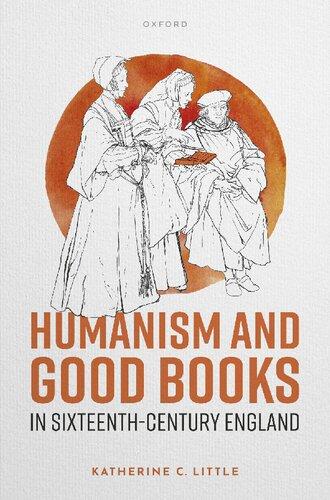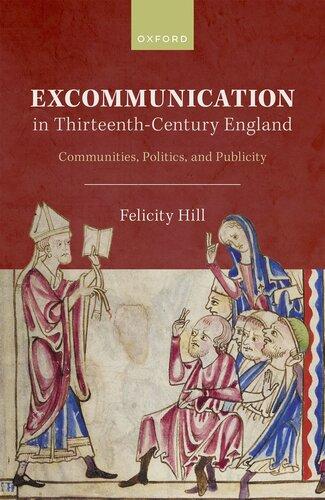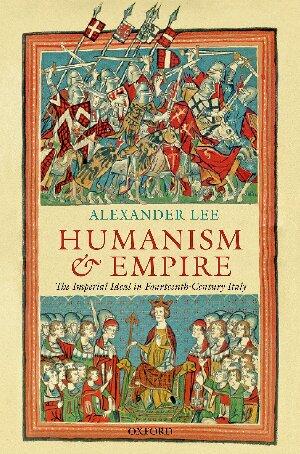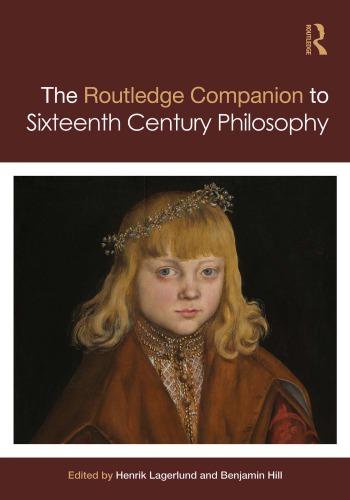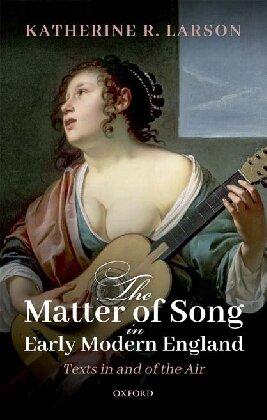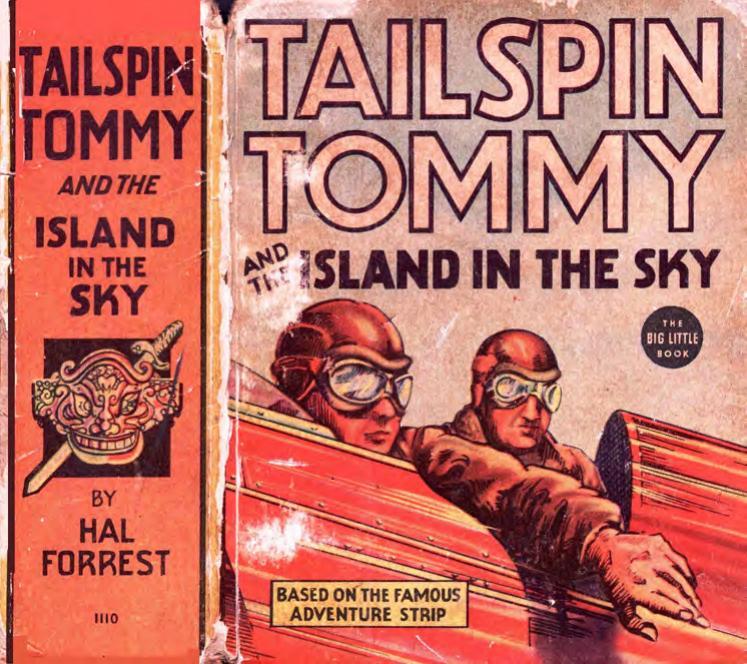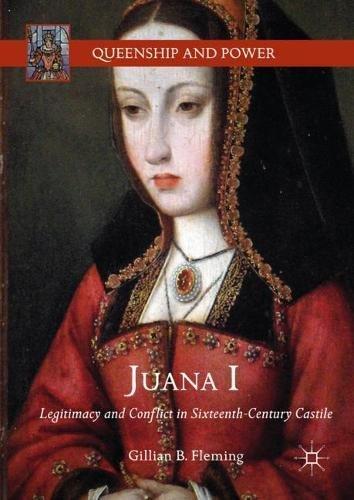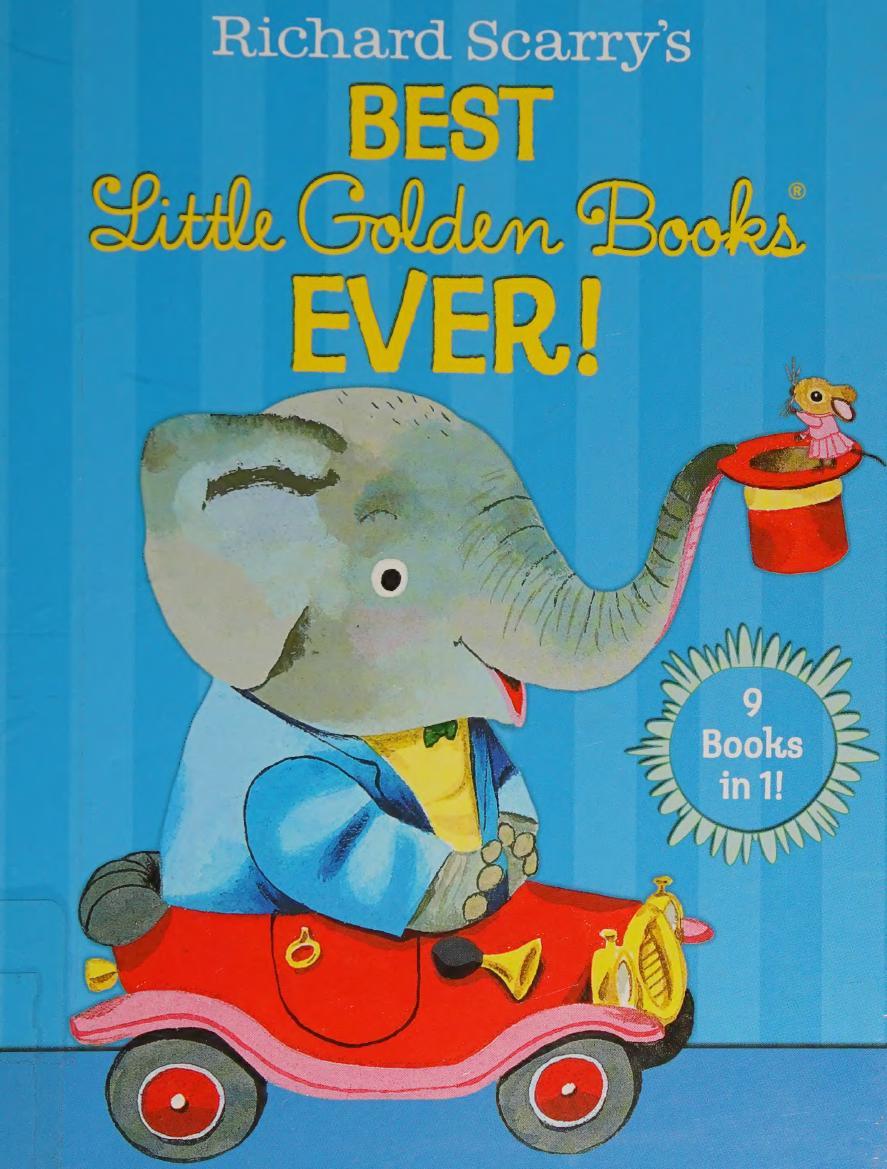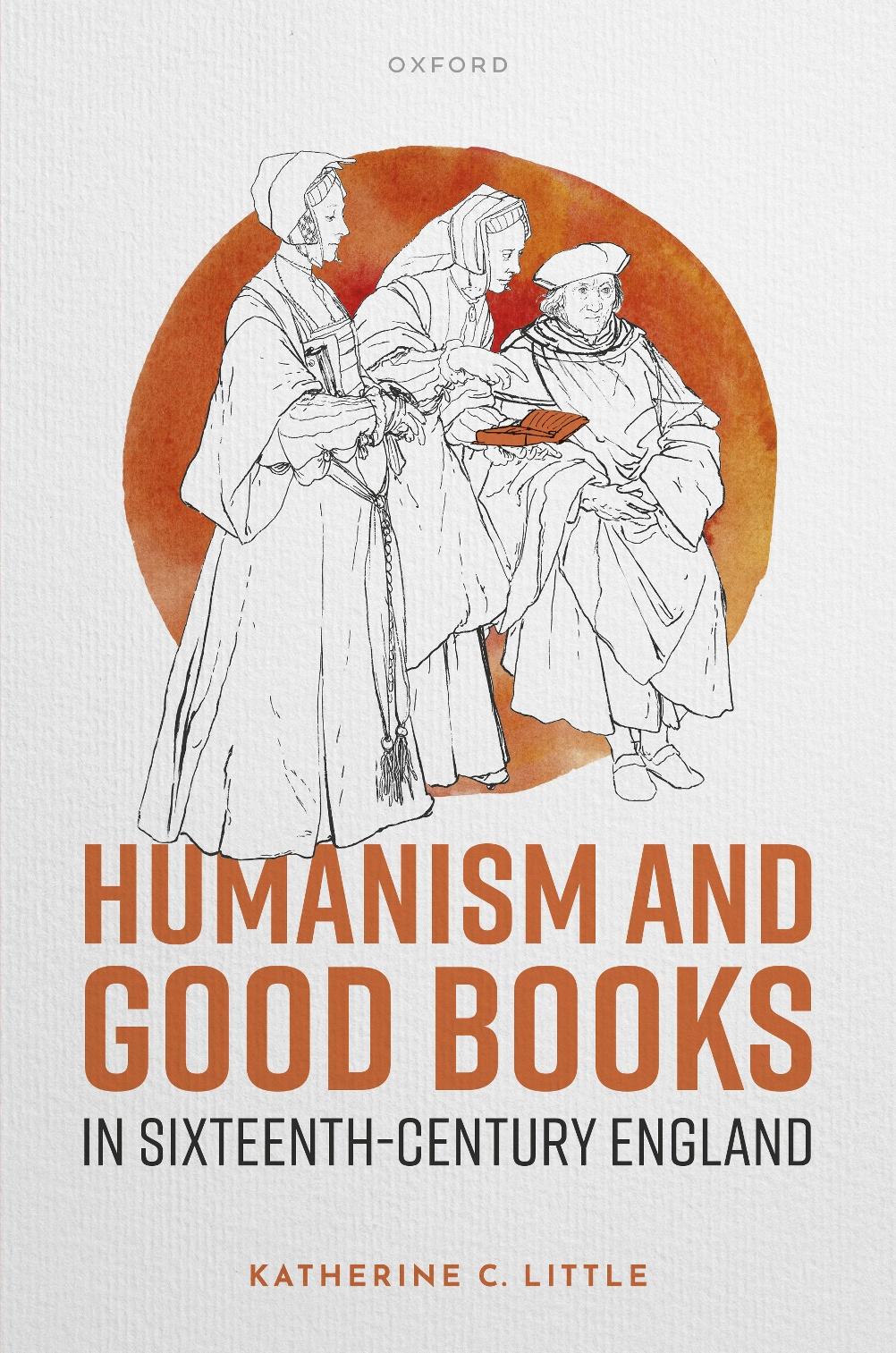Introduction
ReadingIsGoodforYou
SirThomasMorehaslongbeenseenasaheraldofnovelty,asanoriginforthe EnglishRenaissance.¹Muchofthisnoveltycanbeattributedtohishumanism—his deepcommitmenttocelebrating,imitating,andrevivingtheclassicallegacy,what FrancescoPetrarchcalledthestudiahumanitatis.²More’shumanismisonfulldisplayinoneofhislesser-knownworks:abiographyofarguablythemostinfluential Italianhumanist,PicodellaMirandola,thathetranslatedintoEnglishas TheLife ofPicodellaMirandola (1510;1525).³ MoredescribesPicoasaparadigmatically Renaissanceman,anticipatingthejudgmentoflaterhistorians:Picoisnotonly recognizedas“chiefOratorandPoet,”aphrasethatevokestheancientRoman rhetoricianCicero,butisalsopraisedforhismasteryoftheclassicallegacy,his “studyinhumanity.”⁴ Atthesametime,MorefollowshissourceinframingPico’s humanismwithinatraditional,Christian,penitentialtrajectory.Pico,whowas “anexcellent[and]knowledgeablemaninalldisciplinesandvirtuousinhisliving,”endsin“thedarkfireofPurgatory,”wherehis“venialoffencesarecleansed.”⁵ Evenmoreinterestingly,MorelocatesPico’svirtueandknowledge,hisidentifiably Ciceronianideal,inamirror.⁶ Inanopeninglettertohisfriend,thenun,Joyce Leigh,Morewrites,Pico“wastoallthemthataspiretohonoratruespectaclein
¹ SirThomasMoreistheimportantoriginfortheRenaissancein StephenGreenblatt, Renaissance Self-Fashioning:FromMoretoShakespeare (Chicago:UniversityofChicagoPress,1980),11–73,and DavidNorbrook, PoetryandPoliticsintheEnglishRenaissance (London:Routledge,1984),18–31.
² Petrarchtooktheterm studiahumanitatis fromCicero’s ProArchia,anditisroughlyanalogous tohowthetermhumanismisbeingusedinthisstudy:therecovery,celebration,andimitationof theclassicallegacy.See MichaelD.Reeve,“ClassicalScholarship,”in TheCambridgeCompanionto RenaissanceHumanism,ed.JillKraye(Cambridge:CambridgeUniversityPress,2004),20–46.
³ Onthistext,see RobertCummings,“TheProvinceofVerse:SirThomasMore’sTwelveRulesof JohnPicusEarleofMirandula,”in ElizabethanTranslationandLiteraryCulture,ed.GabrielaSchmidt (Berlin:WalterdeGruyter,2013),201–226;and StanfordLehmberg,“SirThomasMore’sLifeofPico dellaMirandola,” StudiesintheRenaissance 3(1956):61–74.LehmbergnotesthatPicoisafigureof fusion(63).
⁴ PicodellaMirandola, HereisconteynedthelyfeofIohanPicuserleofMyrandulaagretelorde ofItalyanexcellentconnyngemaninallsciences,andverteousoflyuynge (London,1525)STC19898, A4v,image5.Spellingmodernized.ForaccountsofPico’simportancetothehistoryoftheRenaissance, see TonyDavies, Humanism,2nd ed.(London:Routledge,2008),94–104; ArthurF.Kinney, HumanistPoetics:Thought,Rhetoric,andFictioninSixteenth-CenturyEngland (Amherst,MA:Universityof MassachusettsPress,1986),4–6;and JenniferSummit,“RenaissanceHumanismandtheFutureofthe Humanities,” LiteratureCompass 9.10(2012):666.
⁵ Pico, TheLife,firstquotationfromthetitleandsecondfromC3r,image15.
⁶ OntheCiceronianideal,see QuentinSkinner, TheFoundationsofModernPoliticalThought, Volume1:TheRenaissance (Cambridge:CambridgeUniversityPress,1978),1:84–94and PaulOskar Kristeller, TheClassicsandRenaissanceThought (Cambridge,MA:HarvardUniversityPress,for
HumanismandGoodBooksinSixteenth-CenturyEngland.KatherineC.Little,OxfordUniversityPress. ©KatherineC.Little(2023).DOI:10.1093/oso/9780192883193.003.0001
whosemodeofbeingtheymightbehold,asinaclear,polishedmirror,inwhat pointstruehonorconsists…[his]marvelousknowledgeandexcellentvirtuemy rudelearningisunabletoexpresssufficiently.”⁷ Themirrorisafamiliarfigurefor abook,onethatwasusedthroughouttheMiddleAgestoencouragereadersto reflectontheirbehavior,toconsiderwhethertheyhavebeengoodorbadaccordingtowhattheyhaveread.TypicalistheuseofthemirrorbytheEnglishpoet JohnLydgateinhislongpoem TheFallofPrinces (c.1431–38):
Oldeexaumplesoffpryncisthathauefall, Therremembraunceoffnewebrouhttomynde, Maybeenamerourtoestatisall, Howtheiinvertushalremediesfynde Teschewevices…
[Ancientstoriesofprincesthathavefallen,theirremembrancenewlybroughtto mind,maybeamirrortoallestates,howtheyshallfindremediesinvirtueto avoidvices].⁸
ReadersofLydgate’spoemshouldusethestoriesoftheprincesasguidelinesfor theirfuturebehavior,justasreadersofMore’sbookshouldmodelthemselves afterPico.
Asthisbriefaccountshouldsuggest,More’s LifeofPico fusestogether,at timesratherstrangely,whatonemightcallthehumanist—excellent,virtuous,and studiahumanitatis[studyofhumanity]—withwhatonemightcallthemedieval— mirrors,sins,andexplicitdirectivestoreaderstobeholdandamend.Withthis fusionofdisparatelanguages,thetextadvertisesitstransitionalstatus;itbelongs toboththeMiddleAgesandtheRenaissance.MoreiscertainlyawareofthedistinctivenessofPico’slife,evenofhumanismitself,andyethedoesnotinsiston novelty,preferringinsteadtoinsertPicointoatraditional,recognizablymedieval, moralframe.
AlthoughPico’s Life hasnotplayedmuchofaroleinliteraryhistoriesofEngland,itoffersinsightintothetransitionfrommedievaltoRenaissance,ortouse OberlinCollege,1955).Kristellerwrites,“thecombinationofeloquenceandwisdom”comesfrom Ciceroand“pervadessomuchRenaissanceliterature”(ClassicsandRenaissanceThought,19).
⁷ Pico, TheLife,A3v,image4,lightlytranslated.
⁸ JohnLydgate, TheFallofPrinces,4vols.,ed.HenryBergen(London:OxfordUniversityPress, 1924–27),Part1:Bk2.22–26.Forasurveyofmedievalmirrorsthatemphasizesthemoralanddidacticfocus,see HerbertGrabes, TheMutableGlass:Mirror-imageryinTitlesandTextsoftheMiddle AgesandEnglishRenaissance,trans.GordonCollier(Cambridge:CambridgeUniversityPress,1982), 23–30.AnotablecontemporaryexamplecanbefoundintheDutchplay, DenSpyeghelderSalicheyt vanElckerlijc [TheMirrorofEveryman’sSalvation](1496;1501),whichisperhapsmostwell-known asthesourceforthemoralityplay Everyman (printedc.1510–25):“Seeruutghelesen,/Merctdesen spieghel[Veryhonorableaudience/markthismirror]”(Elckerlijc,in EverymananditsDutchOriginal,Elckerlijc,ed.CliffordDavidson,MartinW.Walsh,andTonJ.Broos[Kalamazoo,MI:Medieval InstitutePublications,2007],lines871–72).
atermmorerecentlyfavored,theearlymodernperiod,whoseadvent,atleastfor England,haslongbeenlocatedinthesixteenthcentury.⁹AsTheLifeofPicoshould suggest,thistransitionfrommedievaltoRenaissancewasfarfromabrupt:itconsistedoffusionsandcontinuities,ofattemptstobridgeoldandnewwithinthe boundsofasingletext.Moreover,initsframing,itsexplicitdirectionstoreaders, More’sbookrevealsnotonlywhatmadethisparticularbookpossiblebutalsowhat madethetransitionpossible.Thatis,itapproacheswritingandreadingthrougha definedmindset,thatbooksshouldbemorallyuseful.WhatbothPico,asamodel humanist,andthemedievalpenitentialmirrorshareistheideathatreadingbooks isgoodforyou;itisinstructiveinvirtueandviceorinvirtueandexcellence;it canshapereadersinhowtoact,think,andfeel.¹⁰ Inotherwords,Pico’s“studyin humanity,”hisreadingoftheclassicallegacyorofwhatwouldnowbecalledliterature,isabroad“learning”thatincludesmoraleducation.Thatmoraleducation, orientedasitisaroundtheclassicallegacy,isentirelycontinuouswithotherkinds ofmoraleducation,suchasthatfoundinpenitentialtreatises.Suchaperspective isnotuniquetoMore,butavitalwayofthinkingaboutwritingandreadinginthis transitionalperiod,aswillbedemonstratedhere.
MoralityasCulturalContext
Totreatmoralityasaculturalcontextforreadingandwritingistoapproachitas asetofdiscourses,with,therefore,allthepotentialforambiguityandinstability associatedwithotherkindsofdiscourses,suchasliterature.Moralityisnothuman behavioritself—thereisnosuchthingasavirtueorasinempiricallyspeaking— but,rather,ideasabouthumanbehavior,whetheritisgoodorbadaccordingto certainguidelinesorrulesthatarethemselvesrarelyhomogeneous.Moralitycannotthereforebetreatedasexternaltoatext,asakindofidentifiableexperience
⁹ WhentheRenaissanceorearlymodernperiodbeganinEnglandisafraughtquestion,because textswritteninthesixteenth-centurycannotbeplacedinasimpledevelopmentaltrajectory,and becauseidentifiably“medieval”concernspersistedthroughouttheperiod.JamesSimpsondiscusses thedifficultyofperiodizingin TheOxfordEnglishLiteraryHistory,Volume2,1350–1547:Reformand CulturalRevolution (Oxford:OxfordUniversityPress,2002),e.g.,1–6.
¹⁰ Themoralaspectofhumanismiswidelynoted,anditisfundamentaltohumanisteducation. See,forexample, AnthonyGraftonandLisaJardine, FromHumanismtotheHumanities:Education andtheLiberalArtsinFifteenth-andSixteenth-CenturyEurope (Cambridge,MA:HarvardUniversity Press,1986),33,122–57.Atthesametime,moralintereststendtobeneglectedbyliteraryscholars.As IanGreennotes,scholarshavetendedto“marginalizeorofferanarrowaccountoftheethicaldimensionofthehumanisteducationalprogramme”(HumanismandProtestantisminEarlyModernEnglish Education [Burlington,VT:Ashgate,2009],22).ForJeffDolven,forexample,humanistteachingis aform,apoetics,andthecontentofthemoralityislargelyirrelevant(ScenesofInstructioninRenaissanceRomance[Chicago:UniversityofChicagoPress,2007],1–14).Indeed,muchworkonhumanism ispredicatedonanoppositionbetweenthemoral(ordidactic)andtheliterary,apointtowhichIwill returninChapter 1.
thatprecedesorisdistinctfromthewritingaboutit.¹¹Inbrief,moralityis“textueel [bookish]”inexactlythewaythatGeoffreyChaucer’sMancipleexplainsinthe late-fourteenth-century CanterburyTales.Attheendofhisstoryaboutthecrow, theMancipleoffersamorallesson,apparentlydrawnfromthebiblicalbookof Proverbs:
DaunSalomon,aswiseclerkesseyn, Techethamantokepenhistongeweel. But,asIseyde,Iamnoghttextueel
[LordSolomon,aswisescholarssay,teachesamantoholdhistongue.But,asI said,Iamnotbookish].¹²
Astheword“textueel[bookish]”underlines,moralityoftenappearsintermsof rulesor“precepts,”thataredrawnfromaparticulartext,suchastheBookof Proverbs,fortheManciple,orfromAristotle’s NicomacheanEthics orCicero’s De Officiis,formanyhumanists.¹³ Moralitycouldalsobefoundinimaginativewritings,inplaysandpoetry,suchastheRomancomediesofTerenceorVirgil’sAeneid. Thesearethe“goodlettersofhumanity”thattheDutchtheologianErasmusof Rotterdamfamouslyandinfluentiallydescribesinhiswritings,claiminginAComplaintofPeace (1517)thattheycouldshapereadersina“faultless”life,because “aneducationinclassicalliteraturemakeshumanshuman[bonaelitteraereddunt homines].”¹⁴Becauseitcanbefoundinmanydifferentkindsofsources(orbooks), moralityisimportantlyvaried,evenasitclaimshomogeneityoruniversality,what “aman,”asinallmen,shoulddoaccordingtotheManciple.
¹¹ Historico-contextualistapproachestendtoreinforceabinarybetweenliterature,ontheonehand, andtheworldofpoliticsorhumanexperience,ontheother,evenastheytrytoseenegotiations betweentheseentities.Forexample,in RenaissanceSelf-Fashioning,GreenblattreadsSirThomas More’stranslationofthe LifeofPicodellaMirandola intermsofMore’sown“guiltfeelings,”andnot intermsofthepenitentialtraditiontowhichthistextsoobviouslybelongs(51).SeeChristopherCannononthedifficultyor,perhaps,futilityofdrawingaboundarybetweenthe“experientialknowledge” gainedthroughreadingbooksandthatgainedthroughotheractions(“ReadingKnowledge,” PMLA 30.3[2015],714).
¹² GeoffreyChaucer, Manciple’sTale,in TheRiversideChaucer,3rd ed.,ed.LarryBenson(Boston: HoughtonMifflin,1987),9.314–16.AllreferencestoChaucer’sworkswillbetothisedition.
¹³ Thesixteenth-centurytranslationofAristotle’s Ethics usestheterm“precepts”: Aristotle, The ethiquesofAristotle,thatistosaye,preceptesofgoodbehauoute (London,1547)STC754.
¹⁴ ThefirsttwoquotationscomefromtheEnglishtranslationofErasmus’s Adagia printedin1534. See Erasmus, BellumErasmi (London,1534)STC10449,image40[p.39roforiginal).Thelastone comesfromhis Querelapacis in OperaOmniaDesideriiErasmiRoterodami,ed.O.Herding(Amsterdam:NorthHolland,1974),4:628D;and AComplaintofPeace,ed.A.H.T.Levi,trans.BettyRadice in CollectedWorksofErasmus (CWE)84vols.(Toronto:UniversityofTorontoPress,1974–),Vol.27 (1986):289–322.Inasixteenth-centuryEnglishtranslation,thephraseappearsinhisdiscussionof learningas“Goodlettersmakemen”:“Iwyllconueymyselfetothecompanyeoferuditieandlearnyd men.Goodlettersmakemen.ButPhilosophymorethanmen.Diuinitiemakeththemgodes”(The complaintofpeace.WryteninLatyn,bythefamousclerke,ErasimusRoterodamus.Andnuelytranslated intoEnglyshebyThomasPaynell[London,1559]STC10466,B2v;image11).Ontheimportanceofthis phrase, bonaelitterae,forErasmus,see BrianCummings,“ErasmusandtheInventionofLiterature,” ErasmusYearbook 33(2013):22–54;andGraftonandJardine, FromHumanism,124–49.
Moralityisalsoappropriable,evenfree-floating.¹⁵ TheMancipleisnotaclergyman,andyethereferstotheBible,claimingforhimselfsomeoftheauthoritythat goesalongwithit.Evenwhenmoralityisassociatedwithaparticularinstitution, suchastheschoolorthechurch,itisnotmerelyanunproblematiclocationofideology,asimplevectorthroughwhichtheinstitutionattemptstocontrolpeople. Forthatreason,moraldiscoursescannotbereducedtoorequatedwithsocial, economic,andpoliticalforces.¹⁶ Moraldiscoursescirculatebothwithininstitutionsandoutsideoftheircontrol,andtheyareasinterpretable,constructed,and capableofbeingmanipulatedastherealmofpoetry, bonaelitterae,andprose narratives,thekindsofsixteenth-centurytextsthathavecometobeconsidered literatureorliteraryinthetwentiethandtwenty-firstcenturies.¹⁷
Inadditionto,orperhaps,asaresultof,itsbookishness,thelanguageofmorality isalsoconservativeinthetruesenseofthatterm:itchangesveryslowly,accretingandadapting.Whilenewwordsandconceptsareadded,andotherscanand dofade,theyarerarelyprecipitouslycutoff.Peopleinthetwenty-firstcentury, forexample,stillspeakofgreed,eventhoughveryfewofthemwoulddescribeit inspecificallyChristianterms,asaviolationofGod’scommandments,whereby thegreedy“dowrongtoJesusChrist.”¹⁸ As TheLifeofPico demonstrates,More describesPico’smorality,therightnessandwrongnessofhisbehavior,atleastin partwithinthetraditionallanguageofsinsandpurgatoryevenasheacknowledgesthenewerlanguageof“excellence.”Moralityis,inotherwords,acontext forwritingthatrequiresadiachronicapproach.Thereisnocleardividingline,in More’stextorinthoseofhiscontemporaries,betweenone,older,languageofgood
¹⁵ Seesimilarly,Chaucer’sdescriptionofhis TaleofMelibee: Asthus,thoughthatItellesomwhatmoore Ofproverbesthanyehanherdbifoore Comprehendedinthisliteltretysheere, Toenforcewithth’effectofmymateere; AndthoughInatthesamewordesseye Asyehanherd,yettoyowalleIpreye Blamethmenat;for,asinmysentence(Chaucer,Interruptionto TaleofSir Thopas,7.955–61).
¹⁶ Explicitlymoralargumentsaroundliteraturethatcirculatedinthesixteenthcenturyhavebeen influentiallyreadasideological.See,forexample, CatherineBates, OnNotDefendingPoetry:Defence andIndefensibilityinSidney’sDefenceofPoesy (Oxford:OxfordUniversityPress,2017); Richard Halpern, ThePoeticsofPrimitiveAccumulation:EnglishRenaissanceCultureandtheGenealogyof Capital (Ithaca,NY:CornellUniversityPress,1991);and RobertMatz, DefendingLiteratureinEarly ModernEngland:RenaissanceLiteraryTheoryinSocialContext (NewYork:CambridgeUniversity Press,2000).Whilemoralitycancertainlyexpressideology,itwouldbeamistaketoseeitasentirely explainedbyeconomicandpoliticalforces.Readerscontinuetofindbooksusefulfortheirbehavior inwaysthatalsocomplicateideologyorthestatusquo.SeefurtherdiscussioninChapter 1
¹⁷ Thehistoryoftheliterarycanonisahistoryofthedifferentmoralandideologicalterminology usedtodescribesomeofthesametexts.See JohnGuillory, CulturalCapital:TheProblemofLiterary CanonFormation (Chicago:UniversityofChicagoPress,1993),ix.Seealsohissurveyofthecanon debates,3–82.
¹⁸ Chaucer, Parson’sTale,10.744.
andbadbehaviorandanother,newerone;usingmoralityasacontextrequiresan attunementtoparticularchangesovertime.
Accretivenesswillbethetermusedheretorefertothiskindoffusion,not onlyadditions,butalsoocclusionsandsubtractions,allofwhichmakedrawing clearboundariesbetweenmedievalandRenaissancedifficult.Perhapsthemost obvioussignofthisaccretivenessisthatmoraldiscoursesdefyeasydistinctions betweensecularandreligious.Moralityisobviouslynotthesamethingasreligion,bywhichoneshouldunderstandthebeliefspeopleholdandthepractices theyengagein.Itcan(anddoes)presentitselfattimesassecularintheoriginalsenseoftheword,as“worldly,”sinceitdealswithhumanbehaviorinthe world.Onecansaythatlyingiswrong,usingAesop’sfableabouttheboywho criedwolf,withoutinvokinganyreferencetofaithinGodortherequirementsof faith.Themoralofthatstory,inWilliamCaxton’stranslation(1484),makesthis potentialsecularismclear:“Formenbileuenotlyghtlyhymwhicheisknownfor alyer[Mendonoteasilybelieveonewhoisknowntobealiar].”¹⁹ Similarly,the sixteenth-centuryflourishingofinterestinmoralphilosophy,thepagan,classical ethicsfoundinCicero’s DeOfficiis andAristotle’s NicomacheanEthics,couldbe (andhasbeen)readintermsofitssecularism,oratleastitsindependencefrom Christianity.Asoneoftheforemostscholarsofhumanism,PaulOskarKristeller, notes,“theexistenceofthislargebodyofmoralliteraturewrittenbyhumanists andpopularizers,andofthestilllargerbodyofhumanistlearningandliterature, isinitselfasignificanthistoricalphenomenon.Weareconfrontedwithavastbody ofsecularlearning,nourishedfromancientsourcesandcontemporaryexperienceandbasicallyindependentof,thoughnotentirelyunrelatedto,themedieval traditions.”²⁰
Itwouldbeamistaketoinsisttoomuchonthesecularismofhumanistmorality, asKristeller’scautiousapproachto“independence”mightsuggest.Thehistoryof moraldiscoursesislongandattimescomplicated,butthefactofitsaccretiveness inboththeMiddleAgesandtheearlymodernperiodisalsoobvious.²¹ Thelanguageofmorality,oftherightnessandwrongnessofhumanbehavior,emerged outofanongoingconversationbetweenclassicalandChristianwritings.Inthe
¹⁹ HerebegynneththebookofthesubtylhistoryesandfablesofEsopewhicheweretranslatedoutof FrenssheintoEnglysshebywylliamCaxtonatwestmynstreintheyereofoureLordeM.CCCC.Lxxxiij (London,1484)STC175,C2r,image96.
²⁰ PaulO.Kristeller,“HumanismandMoralPhilosophy,”in RenaissanceHumanism:Foundations, FormsandLegacy,3vols.,ed.AlbertRabil,Jr.(Philadelphia:UniversityofPennsylvaniaPress,1988), 3:273.
²¹ OntherelationshipbetweenclassicalandChristianideasofmoralityinthisperiod,Ihavebeen influencedbythefollowing: CharlesF.Briggs,“MoralPhilosophyandWisdomLiterature,”in The OxfordHistoryofClassicalReceptioninEnglishLiterature:Volume1:800-1558,ed.RitaCopeland (Oxford:OxfordUniversityPress,2016),1:299–321; JenniferHerdt, PuttingonVirtue:TheLegacyof theSplendidVices(Chicago:UniversityofChicagoPress,2008)and“Introduction,”JournalofMedieval andEarlyModernStudies 42(2012):1–12; AlasdairMacIntyre, AfterVirtue,2nd ed.(NotreDame,IN: UniversityofNotreDame,1984),165–80;andJohnMarenbon,PagansandPhilosophers:TheProblem ofPaganismfromAugustinetoLeibniz (Princeton,NJ:PrincetonUniversityPress,2015).
penitentialtradition,discussionsofsinandvirtuemakeuseofpagan,classical philosophers,suchasAristotle,togetherwithChristianauthoritiesandtheBible. Chaucer’slatefourteenth-century Parson’sTale,whichisatranslationandcombinationofpopular,latemedievalpenitentialmanuals,demonstratesthisfusion: “AfterPridewillIspeakofthefoulsinofEnvy,whichis,asbythewordofthe Philosopher(Aristotle),‘sorrowofanotherman’sprosperity’;andaccordingtothe wordofSaintAugustine,itis‘Sorrowofothermen’swell-being,andjoyofother men’sharm.’”²² ForChaucer,asformanyauthors,thereisnothingdisjunctiveor oddaboutsettingAristotleandAugustinetogetherinthesamesentence.
SuchaccretivenessisalsoahallmarkofRenaissancehumanism.Evenashumanistauthorsread,imitated,excerpted,andtranslatedmorepagan,classicaltexts thantheirmedievalforebears,theycontinuedtocombine,orevenconflate,the languageofpagan,classicalauthors,suchasCicero,Plato,andAristotle,withthe languageofChristianbehavior,drawnfromtheBible,penitentialtraditions,and otherkindsofdevotionalorexegeticalwritings.Indeed,muchoftheoutputof ErasmusofRotterdam,whichismassivebyanymeasure,couldbedescribedin termsofsuchfusion.²³ Inoneofhismostpopularandinfluentialworks, TheEducationofaChristianPrince(1516),Erasmusexplainsthatchildrenneed“toabsorb bothChristianprinciplesandalsoliteraturethatisofsoundquality[honestasliteras]andconducivetothewelfareofthestate…Suchisthepowerofeducation,as Platohaswritten,thatamanwhohasbeencorrectlybroughtupemergesasakind ofdivinecreature.”²⁴ ForErasmus,Platoisentirelycompatiblewith“Christian principles,”andpagan,classicalliterature—here honestasliteras—isbothhonored foritsqualityandhonorableinandofitself,orvirtuous.
InEngland,duringtheinitialflourishingofhumanisminthefirstpartofthe sixteenthcentury,authorswerefullyawareofthepossibilities:fusingpaganand Christianmorallanguages,adaptingmedievaltexts,andofferingnewapproaches and,attimes,newtexts.WilliamBaldwin,mostfamousasoneoftheauthors ofthe MirrorforMagistrates (1559),re-workedamedievalversionofclassical moralphilosophy, TheDictesandSayingsofthePhilosophers,titlingit ATreatiseofMorallPhylosophie (1547).²⁵ ThechangeintitlealignsBaldwin’sversion morecloselywiththeclassicallegacy,specificallywithAristotle’s Nicomachean Ethics,whichwastranslatedintoEnglishandprintedinthesameyear,1547,asThe
²² Chaucer, Parson’sTale,10.485.
²³ SeeGraftonandJardine, FromHumanism,124–49.
²⁴ Erasmus, TheEducationofaChristianPrince,trans.NeilM.CheshireandMichaelJ.Heathin CWE Vol.27(1986):259.Latinquotationtakenfrom InstitutioPrincipisChristiani,in OperaOmnia 4-1:188.
²⁵ WilliamBaldwin, Atreatiseofmorallphylosophiecontaynyngthesayingesofthewyse.Gathered andEnglyshedbyWylliamBaldwyn (London,1547)STC1253.Thisbookwasextremelypopular (R.W.Maslen,“WilliamBaldwinandtheTudorImagination,”in TheOxfordHandbookofTudorLiterature,1485–1603,ed.MikePincombeandCathyShrank[Oxford:OxfordUniversityPress,2009], 291–306).Onitsmedievalism,see CurtF.Buehler,“ASurvivalfromtheMiddleAges:William Baldwin’sUseofthe‘DictesandSayings,’” Speculum 23(1948):76–80.
EthiquesofAristotle,aguidefor“goodbehavior.”²⁶ Inhistreatise,Baldwinextends thebriefaccountofpaganismthathefoundinthemedievalversion,drawingthe reader’sattentiontothepotentialcontradictionbetweenclassicalandChristian: “Foralthough(GoodReader)thatphilosophyisnottobecomparedwiththemost holyscriptures,yetisitnotutterlytobedespised.”²⁷Eventhoughmoralphilosophy isnotbiblical,itisneverthelessuseful:“Moralphilosophymaywellbecalledthat partofgod’slaw,whichgivescommandmentofoutwardbehavior:whichdiffers fromthegospel,inasmuchasthegospelpromisesremissionofsins,reconciling toGod,andthegiftoftheholyghost,andofeternallife,forChristssake.”²⁸ Even asBaldwindistinguishesbetweenclassicalandChristian,heacknowledgestheir sharedinterestinshapingbehavior,throughcommandmentsandlaw.
Thisaccretiveness,ofclassicalandChristian,ofmedievalandhumanist,persistsacrossthesixteenthcentury,linkingpre-andpost-Reformationmoraldiscourses.²⁹Tobesure,thelanguageofChristianbehaviorchanged,as,forexample, penitentialmanuals,likeChaucer’s Parson’sTale,fadedfromview.Andyet,the morallanguagearound“thestudyofhumanity,”orwhatwouldnowbecalledliterature,remainedconstant,likelybecauseofthetietoeducationalsettings.Thatis, giventheuniformdependenceontheclassicallegacyingrammarschoolsanduniversities,theretendedtobegeneralagreementaboutthemoralvalueofclassical texts,theirongoingusefulnessinteachingaboutgoodandbadbehavior,however defined.³⁰ SuchcontinuityisevidentinthepopularityandinfluenceofErasmus, whostandsforthemoralvalueofliteraturethroughoutthesixteenthcentury, acrossthedivideoftheReformationorReformations.ErasmusappearsattheoriginofEnglish,humanisteducation,praisedforhislearningandinstrumentalin writingthebookknownas Lily’sLatinGrammar, whichshapedgrammarschool educationthroughoutthesixteenthcentury.³¹ Later,bothRogerAscham,noted mid-sixteenth-centuryProtestanttutor,andThomasLodge,Elizabethandefender
²⁶ Aristotle, TheethiquesofAristotle,F4v,spellingmodernized.
²⁷ Baldwin, Atreatise,image5,spellingmodernized.Inthemedievalversion,theauthoronly mentionspagansatthebeginning:“Andinespecialbycauseoftheholsomeandswetesayngesof thepaynemswhycheisagloriousfayrmyrrourtoallegoodcristenpeopletobeholdeandvnderstonde”(Abual-Wafa’MubashshiribnFatik, Hereendeththebooknamedthedictesorsayengisofthe philosophres [London,1477]STC6826,image2).
²⁸ Baldwin, Atreatise,image6.
²⁹ TherearethosewhoseetheReformationasanimportantrupture.See PaulCefalu, MoralIdentityinEarlyModernEnglishLiterature (Cambridge:CambridgeUniversityPress,2000)and Brian Cummings,TheLiteraryCultureoftheReformation:GrammarandGrace(Oxford:OxfordUniversity Press,2002).Withoutdenyingtheseimportantshifts,onecanstillacknowledgethatrupturehasbeen overstated.
³⁰ Educationchangedagreatdealduringthefirstpartofthesixteenthcentury,buttherewere importantcontinuitieswiththelateMiddleAges,atleastintermsofthevalueassignedtotheclassical legacy.See,forexample, NicholasOrme, EducationandSocietyinMedievalandRenaissanceEngland (London:HambledonPress,1989),16–17,and JoanSimon, EducationandSocietyinTudorEngland (Cambridge:CambridgeUniversityPress,1966),57–60.
³¹ WilliamLily,Lily’sGrammarofLatininEnglish:AnIntroductionoftheEyghtPartesofSpecheand theConstructionoftheSame,ed.HedwigGwosdek(Oxford:OxfordUniversityPress,2013),83.
ofpoetry,invokeErasmusonthemoralbenefitofreadingclassicalpoetry.Inhis educationaltreatise, TheScholemaster (1570),AschamdescribesErasmusas“the honoroflearningofallourtime,”andthereforeanauthorityforteachingwisdomthroughstudyoftheclassicallegacy.³² Similarly,inhis“DefenseofPoetry, Music,andStagePlays”(1579),LodgeusesErasmustodefendpoetryforitsmoral instructiveness:“Erasmuswillmakethat[i.e.poetry]thepathwaytoknowledge.”³³ ForLodge,Erasmianideasaboutbonaelitterae,thegoodofclassicalliterature,are stillentirelyrelevant.
MoralityandLiteraryHistory
Withitsaccretivenessandconservatism,moralitysuggestsanapproachtothe transitionbetweenmedievalandearlymodern,tosixteenth-centuryliteraryhistory,thatisasinterestedincontinuitiesasdisruptions,asawareofthefusionsas ofthenoveltyinforming“thestudyofhumanity,”orhumanism.Thisbookoffers thatliteraryhistory,arguingthatmoralitycanhelpexplainliteraryproduction inthisperiod,notonlybecausemoralconcernsinformedindividualtextsbut alsobecausetheyhelpedconstructanideaofliterature.Fromthisperspective, sixteenth-centurytextscanbeseenasparticipantsinaseriesofongoingconversationsaboutwhatliterature,whetherclassicaltextsorpoetryorevenstories,should dotoandforreaders.Theseconversationsinvolvepasttextsandauthors,whether classicalormedieval,andawidevarietyofparticipants:textsthathavecometobe seenascanonicalaswellasthoseatthemargins,textsthatremainmuchstudied today,andthosethathavebeenlargelyneglectedbyliterarycritics.
Thefirstpartofthebookexplorestheemergenceofhumanism,thewayin whichthisliterarymovementintersectedwithandtransformedwhathadcome before.Chapter 1 isinsomewaysacontinuationoftheintroduction,asurveyof thetransitionbetweenmedievalandhumanist,intermsofideasaboutliterature.It reexaminesfamiliarclaimsforhumanistnovelty,claimsthatdependonopposing humanisttomedieval:thathumanistsofferednotonlyanewapproachtotheclassicalinheritancebutalsoanewideaofliteraryvalue,as,forexample,eloquence. Byresituatingmedievalandhumanisttextsinrelationtoeachother,mychapter showsmedievaltextstobemorecomplexintheirapproachtovalue,andhumanisttextstobelessnewthanisoftenassumed.Therealnoveltyofhumanismis notitsattentiontoliteraryvaluepersebutitsstandardizationofthecertainlink betweenliteraryandmoralvalue,intheconflationfoundintheErasmianterm, “goodletters[bonaelitterae].”
³² RogerAscham, TheScholemaster,in EnglishWorks,ed.WilliamAldisWright(Cambridge: CambridgeUniversityPress,1904),215.
³³ ThomasLodge,“DefenceofPoetry,Music,andStagePlays,”inElizabethanCriticalEssays,2vols., ed.GeorgeGregorySmith(Oxford:ClarendonPress,1904),1:66.
Thehumanistinterestinmoralitywasnotmerelytheoretical,italsoinformed theirliteraryexperimentations:thenewandnewlyrevisedgenresthatappearedin thefirstpartofthesixteenthcentury.ThesearethesubjectofChapters2through5. Perhapsthemostobviousevidenceofhumanistmoralinterestisthemoralityplay, andthesecondchaptertakesuptheflourishingofthisgenreintheearlypartof thesixteenthcentury.Assigningthemoralityplaytohumanismmayseemsurprising,sincetheseplaysaretypicallyunderstoodasmedieval.Thisdating,orrather, mis-dating,haslongreinforcedthedivisionbetweenmedievalandRenaissance literature,inwhichmedievaltextsarecharacterizedbytheirChristianmorality andRenaissancetextsbytheirincreasingindependenceorsecularism.Thegreat majorityofmoralityplays,includingspecificallyChristianmoralityplays,belong, however,tothefirstpartofthesixteenthcentury.Theseplaysthusnotonlycoincidewiththeemergenceofhumanismbutalsoofferinsightintoit,asIargue,using twocasesfromtheearlysixteenthcentury:theextremelypopularplay Everyman, whichwasprintedatleastfourtimesbetweenc.1510and1535,and Munduset Infans (1522).
Torefocushumanismarounditsmoralinterestsisalsotoreviseourunderstandingofperhapsitsmostfoundationalaspect—thereclaimingoftheclassicallegacy, mosttypicallythroughsomeformofimitation.Classicalimitationhaslongbeen understoodassignalingtheindependenceidentifiedbyKristeller,evenakindof proto-secularism.Fromthisperspective,embracingandimitatingclassicaltexts, appreciatingthemontheirownterms,wouldseemtomarkoutanewspacefor literatureandliteraryvalue,onethatisfreeoftheChristianmoralvaluesthathad previouslybeenassignedtothesetexts.Classicalimitationinthisperiodwasnot, however,asindependentasitmightappeartobe.ThehumanistdesiretofuseclassicaltextstoalargelyChristianmoralityshapedoneofthemostpopularkindsof classicalimitationinthisperiod:theChristianTerencetradition.Althoughnow largelyforgotten,thistraditionwasextremelyinfluentialduringthesixteenthcenturyandcentraltothehumanisteducationalprogram.WrittenfirstinLatinand theninthevernacular,theseplayswereubiquitousinEuropeandEngland,and theyshowtheproductivefusionofclassicaltextswithinChristianmoralframeworks,suchastheprodigalson.Inthethirdchapter,Iusethepopular,Latin, humanistplay Acolastus (1529)anditsquasi-official,EnglishtranslationbyJohn Palsgrave(1540)asacasestudyforthiskindoffusion.Evenastheplayembraces thegoalsofErasmianhumanism,inwhichclassicaltextsteachChristianmorals, italsodemonstratesanambivalenceaboutthisproject.Thatis,itwritesaparticularlyChristiansenseofloss,throughtheparableoftheprodigalson,intoits imitatio.
Althoughhumanistspresentedmoralityasastabilizingvalueforliterature,it was,astheexampleof Acolastus shouldsuggest,problematic.Indeed,thatthe classicallegacymightnotmatchChristianmoralityexactlyormightevenbe opposedtoitisnotaphenomenonuniqueto Acolastus butonefoundthroughout
humanisttexts.³⁴ Itistypicaltoviewthismismatchoroppositionlargelypositively,asasignoftheindependenceofliteraryvalueforhumanistsoreven,more polemically,bythosewhoembraceJacobBurckhardt’sideaoftheRenaissance, astheircastingoffofveils,dreams,primitivism,andrigidChristianmeanings.³⁵ Whiletherecanbenodoubtthatthesemismatchesandoppositionsweregenerative,theyalsocarriedwiththemthepotentialtolimittheveryvalues,thegood, thattheseauthorsclaimedtosupport.
SuchlimitingappearsinoneofthemostinfluentialhumanisttextsinEngland, SirThomasElyot’sBokeoftheGovernor (1531),thesubjectofChapter4.Thistext, atfirstglance,followsthekindoffusionpopularizedbyErasmus’s Educationofa ChristianPrince,combiningChristianprinciplesandclassicalliteraturetoeducate readersmorallyandpolitically,totrainthemtoworkforwhatErasmuscalls“the welfareofthestate.”Elyot’sfusionis,oncloserlook,lessanattempttoharmonize thetwotraditions,andalsolessanembraceoftheindependenceoftheclassicallegacy,thanitisanattempttolimitChristianmorality.Inhistreatise,Elyot usesclassicaltextsandinfluencesideologically,tocontainanddisarmfamiliar Christianvirtues,suchascharityandpatience.Suchcontainmentisnewlynecessary,givenElyot’simmediatehistoricalcontext:fearsaboutsociallyradicalideas circulatingintheReformation.Bythe1520s,someoftheideasassociatedwith Erasmus—accesstoscripture,condemnationsofpagantyranny—could(andfor somedid)looklikethekindofegalitarianismorcollectivismassociatedwiththe Anabaptists,theradicalReformersofthesixteenthcentury.ElyotlimitstheErasmianpossibilities:inhistreatiseclassicaltextsprovideanalternativeandmore oppressivesetofguidelinesforgoodandbadbehavior.
Thedestabilizingpotentialofthehumanistproject—ofthatconfidentlink betweenclassicaltextsandChristianmorality—receivesmoresustainedattentioninamid-sixteenth-centuryplaybyJohnPhillip, ThePlayofPatientGrissell (c.1558–61),asIdiscussinChapter 5.Thisplay,whichalsoseemstostemfrom aneducationalenvironment,meditatesonthenew,heightened,moralstatusof classicaltextsbyreturningtoafamiliarmedievalform,theexemplum,andafamiliarmedievalcharacter,PatientGriselda.Inexploringthe exemplum asaform,the relationshipthatformencodesbetweenmoralandstory,itshowshowthehumanistprojectisnotonlyorevenprimarilyanewdirection,afreeingofclassicaltexts fromChristianlanguage,but,rather,altersbothmoraldiscourses,theclassicaland theChristian.
³⁴ Contradictionswereinherentinthehumanisteducationalprogram:thiswasa“biculturalsituationinwhichChristianandpaganelementsexistedinanoftenuneasysymbiosis”(AnnMoss, “HumanistEducation,”in TheCambridgeHistoryofLiteraryCriticism:vol.3:TheRenaissance,ed. GlynP.Norton[Cambridge:CambridgeUniversityPress,1999],3:145).
³⁵ JacobBurckhardt CivilizationoftheRenaissanceinItaly,trans.S.G.C.Middlemore(London:Sonnenschein,1904),129.GreenblattandmorerecentlyRichardStrierquoteJacobBurckhardt approvinglyin RenaissanceSelf-Fashioning,1,and TheUnrepentantRenaissance:FromPetrarchto ShakespearetoMilton (Chicago:UniversityofChicagoPress,2011),2,respectively.
Phillip’splay,appearinginthemiddlepartofthesixteenthcentury,isa harbingerthathumanistconfidenceinthemoralgoodness,evengreatness,of literarytexts,mustandwouldinevitablyfade.Andthelatterpartofthesixteenthcenturyseesthedissipationofhumanistconfidence,thedissolutionofthe “graft[ingof]pietyonto litterae,thatErasmusmadebothinfluentialandsuccessful.”³⁶ AsthetitlesofbothLodge’s“DefenseofPoetry,Music,andStagePlays”and SirPhilipSidney’smorefamous DefenseofPoesy [AnApologyforPoetry](1595) shouldsuggest,poetryneededtobedefended,itsvaluestabilized,orre-stabilized, onmoralgrounds,despiteandalsobecauseoftheboldclaimsmadebyhumanists. Indeed,aretreatfromhumanism,especiallyfromitsmorallydidacticaspects,is thoughttocharacterizetheliteratureoftheElizabethanperiodmoregenerally.³⁷ ThisretreatorbacklashhasbeeninfluentiallydescribedbyRichardHelgersonin hisstudyTheElizabethanProdigals.ForHelgerson,theflourishingofElizabethan writingwasmotivatedbyagenerationalconflict,specificallyaroundmorality:the authors’rebelledagainstthemoraladvicegivenbytheirhumanist“fathers”and thenrepented.³⁸
Andyet,despitetheirambivalenceabout,evenrejectionof,humanism,late sixteenth-centurywriterswerenotinanypositiontodiscardthelinkbetweenliteratureandmorality,toimaginealiteraturefreeofmorality.Theyhadinherited aframework,fromboththemuch-admiredclassicaltradition,whetherHorace’s dulceetutileorCicero’swisdomandeloquence,andtheirmedievalancestors,such asGeoffreyChaucerandJohnGower,thatrequiredthemtothinkaboutandeven defendthemoralityoftheirwritings.Asaresult,theemergenceofdoubt,which characterizedtheliteraryproductionofthegenerationfollowingthehumanists, didnotcausetheseauthorstoabandonmorality,butinsteaddrovethemtolook forothermodels,namelybyreturningtopre-humanist,ormedieval,authorsand traditions.
Chapters6–8 explorethreeofthemostprolificauthorsintheElizabethan period—GeorgeGascoigne,RobertGreene,andEdmundSpenser—intermsof bothdoubtinandalternativestohumanism.Eachoftheseauthorsraisesdoubts abouthumanistcertainty,thegoodofthe bonaelitterae,andimaginesamoral model—“worldlyvanity”—thatcanaccommodateandcontainthepotentialmoral dangersoftheclassicallegacyandofliteraturemoregenerally.Thismoralmodel acknowledgestheinstabilityofliterature’smoralimpact(itsmoralvalue)and thereforeallowsandevenencouragestheinvestigationofwhathumanistshave
³⁶ GraftonandJardinenote,“inspiteoftherebeingnoexplicitlinkbetweentheinfluentialtextbooks ofLatineloquenceandanymoralordevotionalmeta-system,Erasmus’sextremelypublicpersonality …andthelettersconvenientlyavailableto‘gloss’aworklikethe DeCopia enabletheErasmusscholar tograftpietyonto litterae”(FromHumanism,139–40).
³⁷ Forafullaccount,seethebeginningofChapter 6
³⁸ See RichardHelgerson, TheElizabethanProdigals (Berkeley,CA:UniversityofCaliforniaPress, 1977).JeffDolven’soppositionbetweenromanceandhumanism(didacticism)isquitesimilarto Helgerson’s;seehis ScenesofInstruction.
suppressed—thatreadingmightbebadforyou.“Worldlyvanity”isthepessimistic medieval contemptusmundi traditioninwhichallearthlythings,including,of course,literature,areawasteoftimeorharmful.Chapter 6 outlinesthisElizabethantrajectory,fromhumanistconfidence,tothedissipationofconfidence,and thento“worldlyvanity.”ItbeginswithSirPhilipSidney’s AnApologyforPoetry asanexampleofhumanistconfidence,demonstratingthewayinwhichhumanismsuccessfullydefinedanddefendedpoetryasmorallyusefulatleastinpart byrepressingcontradictionsbetweenclassicaltextsandChristianmorality,the destabilizingpotentialthatinheresinthehumanistproject.Thesecontradictions hadamedievalsignature,sotospeak,inthattheyhadalsopreoccupiedmedieval authors,suchasChaucer.RobertGreene’streatise VisionWrittenattheInstantof hisdeath (1592)demonstratesafairlytypicalElizabethanretreatfromhumanist confidenceand,ultimately,retreatfromtheideaofbonaelitteraeorliteratureitself. ItreturnstoSidney’srepressed,invokingChaucerandhis CanterburyTales tocall humanistclaimsformoralusefulnessintoquestion,andultimately,toadvocate forturningawayfromliterature(orwriting)asa“worldlyvanity.”
GeorgeGascoigneandEdmundSpenseralsoofferversionsofthistrajectory throughdoubtandintothesolutionofferedby“worldlyvanity.”Chapter 7 takes uptwoofGeorgeGascoigne’sfinalworks,amoralplay TheGlasseofGovernement (1575)andadevotionaltreatise, TheDroomeofDoomesday (1576).Read together,thesetextspessimisticallyabandonhumanismanditsmoralclaims.First, Gascoignere-imaginesaninfluentialhumanistmode,theChristianTerencetradition,inhisplay, TheGlasse,emptyingoutitsconfidentclaimsforthemoral valueofclassicaltexts.Hethenturnstothe contemptusmundi tradition,translatingLotariodeiSegni’s DeMiseriaCondicionisHumane (c.1195)as“TheView ofWorldlyVanities”in TheDroome,counteringthehumanistemphasisonvirtue withamedievalfocusonsin.LikeGreene,Gascoigneisnotconvincedthatliteratureuniformlyinculcatesinvirtue,andheultimatelyadvocateswhathedescribes asaChaucerianpathway,ofturningawayfromwriting.
WhilebothGreeneandGascoignequestionthemoralvalueofreadingand writing,Spenser’sexplorationofmoralvalueismorehopeful,asdemonstrated intheeighthandfinalchapter.Inhispoetrycollection, TheComplaints (1591), SpenserusesChaucerbothtocritiqueandtoremedytheideaofliteraturethat hehasinheritedfromthehumanists.First,heportraysthedeleteriouseffectof humanistimitation,itsemotionalattachmenttothepast,andthenheimagines literatureworkingmorallyagain,asaChristiansocialcorrective.Asisfittingfor themostChaucerianoftheElizabethans,Spenserapproachesliteraryinventionas inextricablytiedtomoralquestions,andthistieinspireshimasmuchasitcauses himconcern.
Eachoftheauthorsdiscussedinthisstudy,whethercategorizedasmedieval orRenaissance,understoodthatalmostalltexts,thegreatandthetrivial,the delightfulandthedidactic,thesolemnandtheribald,raisequestionsforreaders
thatarerecognizablymoral:abouthowtheyshouldactintheirlives,aboutwhat theyshoulddo,think,andbelieve,aboutwhethertheyagreeordisagreewiththe behaviorsreflectedinorencouragedbytexts.TheseconcernsnotonlytiethesixteenthcenturycloselytotheMiddleAges,theyalsoreachacrossintoourown time.
TheNew,theMedieval, andtheRenaissance
Renaissancehumanistsfamouslyofferedanewapproachtopoetry,definingthemselvesagainsttheirmedievalpredecessors.¹ AsSirPhilipSidneywritesin An ApologyforPoetry (c.1581;printed1595),themedievalpoetGeoffreyChaucer belongstoa“mistytime”incontrasttoSidneyhimself,wholivesina“clear age.”² Sidney’sclear-sightednesscanbeunderstoodnotmerelyasnewforhisown timebutasmodern,theoriginofatwentieth-centurysensibilityaboutpoetry, evenliteraturemorebroadly.Indeed,humanisttreatisesonpoetryhavelongbeen viewedasaprecursortomodernliterarycriticism.InBernardWeinberg’sinfluentialstudy, AHistoryofLiteraryCriticismintheItalianRenaissance,heargues thattheRenaissancewasa“crucialpointinthehistoryofWesternliterarycriticism,thatpointatwhichthedoctrinesofclassicalantiquityweretransformedinto somethingnewanddifferent,whichinturnbecamethebasisofmodernliterary criticism.”³ WeinbergsummarizesthismodernapproachthroughthefifteenthcenturyItalianhumanistGuarinoGuarini,whooffers“atheoryofpoetryasan independentart,subordinatedneithertotherationaldisciplinesnortotheethicalsciencesandachievingitsownspecialendsbyfollowingprinciplesthatare specificallyitsown.”⁴ Inthisfamiliarperspective,whichdevelopedattheendof thetwentieth-century,itisonlywithhumanismthatoneseesadistinctsenseof theliterary,as“independentart.”Themodernsenseoftheliteraryis,therefore,a sensethatoriginatedintheRenaissance,developinginoppositiontomedievaltraditions,whichwerethoughttohavesubordinatedpoetrytootherkindsofvalues.⁵
¹ FrancescoPetrarchfamouslyconsideredhimselfnew,defininghimselfagainstthe“darkages.”Such claimsmustbetakenwithagrainofsalt;Petrarchalsoimitatedhismedievalpredecessors.See,for example, JohnFreccero,“TheFigTreeandtheLaurel:Petrarch’sPoetics,” Diacritics 5.1(1975):34–40.
² SirPhilipSidney, AnApologyforPoetry,orTheDefenceofPoesy,3rd ed.,ed.GeoffreyShepherd, rev.R.W.Maslen(NewYork:PalgravePress,2002),110.Hereafterallreferencestothistextwillappear parenthetically.
³ BernardWeinberg, AHistoryofLiteraryCriticismintheItalianRenaissance,2vols.(Chicago: UniversityofChicagoPress,1961),1:39.
⁴ Weinberg, AHistoryofLiteraryCriticism,1:30.
⁵ Ontheroleoftwentieth-centuryliterarycriticismindefiningliterature,see JohnGuillory,“The LocationofLiterature,”in ACompaniontoLiteraryTheory,ed.DavidH.Richter(Oxford:WileyBlackwell,2018),151–64;and E.D.Hirsch,Jr.,“TwoTraditionsofLiteraryEvaluation,”in Literary TheoryandCriticism:FestschriftPresentedtoRenéWellekinHonorofhisEightiethBirthday,ed.Joseph P.Strelka(NewYork:PeterLang,1984),283–98.Onthedifficultyofreconcilingmedievaltextswith HumanismandGoodBooksinSixteenth-CenturyEngland.KatherineC.Little,OxfordUniversityPress. ©KatherineC.Little(2023).DOI:10.1093/oso/9780192883193.003.0002
InThomasM.Greene’s TheLightinTroy:ImitationandDiscoveryinRenaissancePoetry,heexplainsthisshiftfromamedievaltoamodernideaofliterature: Renaissancepoetrydefinesitselfbyrejectingthemedieval,the“security”ofits “enduring,predeterminedvalues,”andembracingtheinstabilityandslipperiness oflanguageitself.⁶ Brieflyput,amodernideaofliteraturebeginswithaseriesof relatedshifts,frommedievaltoRenaissance,fromsimpletocomplex,fromsubordinationtoindependence.Theseshiftsare,importantly,althoughoftenimplicitly, moral:from“ethicalsciences”and“predeterminedvalues”toartandambiguity. Whatmakesliteratureliteraryis,inthisperspective,itsindependencefromthe kindofovertmoralcontentassociatedwithmedievalliterature.
Thedominance,eventherightness,ofthismodernideaofliterature—thatwhat makesliteratureliteraryisitsartand,relatedly,itsnon-utility,itsambiguity,its independencefrommorality—hasrecentlycomeintoquestion.Perhapsthemost well-knownchallengeisthatofferedinRitaFelski’smanifesto UsesofLiterature, inwhichshefindsthatscholarshave“asingle-mindedfixationonthemeritsof irony,ambiguity,andindeterminacythatleavesitmystifiedbyotherstructuresof value.”⁷Felskithenoutlinesadifferentsetofvaluesorientedaroundreaderlyuses: recognition,enchantment,knowledge,andshock.Alloftheseusesaremoral,at leastasthattermisbeingusedinthisbook:theyhavetodowiththecapacity ofatexttoshapereaders’behavior,thoughts,andfeelingsinwaysthatare(or canbe)evaluatedasgoodorbad,thatalignwithvaluesthatreadersholdinthe worldoutsidethetext.Insofarasbooksareorcontinuetobeusefulforreaders, literature,asacategory,maynotbeasindependentfromthe“ethicalsciences”as somescholarshavemadeitouttobe.⁸
AlthoughFelskidoesnotconcernherselfeitherwithearlymoderntextsorwith earlierideasaboutliterature,thereassessmentthatsheadvocateswouldnecessarilyhaveconsequencesforthelinkwithwhichthischapterbegan,between earlymodernandmodern.Thatis,if“modernliterarycriticism”hasnarrowed theideaofliteraturebyelidingusefulness,thenithasdonesoatleastinpartby misrepresentingtheoriginsofthatidea—inRenaissancehumanism.
modernideasofliterature,see JohnDagenais, TheEthicsofReadinginManuscriptCulture:Glossing the“Librodebuenamor” (Princeton,NJ:PrincetonUniversityPress,1994),e.g.10.
⁶ ThomasM.Greene, TheLightinTroy:ImitationandDiscoveryinRenaissancePoetry (New Haven,CT:YaleUniversityPress,1982),30.JoelAltmansimilarlyconsidersmoralambivalenceto befundamentalto“theplayswereallycherish,”andhecomesupwithaclearboundarybetweenthe demonstrative(playsthattell)andtheexplorative(playsthatshow)inTheTudorPlayofMind:RhetoricalInquiryandtheDevelopmentofElizabethanDrama (Berkeley,CA:UniversityofCaliforniaPress, 1978),e.g.13–30.InareviewofAltman’sbook,G.K.Huntertrenchantlyobserves,“itishardnotto noticebehindtheparticularfelicitiesof TheTudorPlayofMind therecurrentmodernisttastefora nonethicallanguageofliteraryappreciation”(G.K.Hunter,“ElizabethanDramaontheHighWire,” TheSewaneeReview 88.1[1980]:105).
⁷ RitaFelski, UsesofLiterature (Malden,MA:Wiley-Blackwell,2008),21.
⁸ TobinSiebersalsoarguesforthemoralpurposeofliterature,anticipatingFelskitoacertaindegree, bycriticizingscholarsfortheirnarrowfocus,theirdisdainforthecommonreader.Seehis Moralsand Stories (NewYork:ColumbiaUniversityPress,1992).
Indeed,itisworthreturningtothefoundationaldistinctionthattwentiethcenturyliterarycriticismmade,betweenmedievalandRenaissance,andasking someofthesamequestionsagain:didhumanistshavenotonlyanewbuta modernideaaboutthevalueofliterature?Or,toborrowSidney’slanguage,did humanistsseepoetrymoreclearlythanmedievalauthors?Theanswerisbothyes andno.Humaniststheorizedpoetryandeloquentwritingingreatdetail,defining andjustifyingasSidneydid,creatingamoreunifiedideaofliteraturethanhad existedpreviously.Atthesametime,thatideaisnotentirelymodern,inthesense definedabove,becausehumanistswereasinterestedastheirmedievalforebearsin usefulness,inthecapacityofliteraturetomove,teach,anddelight.Forthatreason, theirsenseoftheliterarywasnotindependentofmorality,those“predetermined values,”norwasitorientedaroundart.Humanistnoveltyisthusnot,oncloser look,exactlywhator,moreproperly,where,itisoftenassumedtobe,inarealm ofthedistinctlyliterary.
Humanistsdonotsomuchruptureorseparatefrompastapproachestovalueas adaptandalterthem,offeringanewversionofanoldconcern:themoralusefulnessofliterature.Readagainsttheirmedievalpredecessors,humanists,somewhat surprisingly,putmore,andnotless,emphasisonmoralvalue.Wheremedieval authorsrecognizedthatliterature,asintheclassicallegacy, can begoodforreaders,humanistauthorsthoughtitwaswithoutquestionthebestthing.Thischapter willtracethisshift,frommedievaltohumanist,usingclassicismasthemost familiarsiteforideasaboutliteraturetoplayout.
MyrevisionstoRenaissance(orearlymodern)noveltywillnotbesurprisingto medievalists,whohavelongunderstoodthecomplexityoftheworkstheystudy.It isneverthelessnecessarytolaythefoundationforthefollowingchapters,tobridge thedividebyputtingsixteenth-centuryauthorsintodirectconversationwiththeir predecessors.
TheMedieval
Medievalauthors,atleastinEngland,donotpresentnoraretheyguidedbyan ideaofgoodliterature,orevenofpoetry,thatmatchesthetreatisescreatedby thehumanistsandtheirsuccessors.Howevermuchmedievalauthorsmayhave defendedpoetry,theydidnotwrite“defences”ofit,andtheapparentnoveltyofthe titlesgiventoSidney’streatise, DefenceofPoesy or AnApologyforPoetry can(and does)standinforamoregeneralnoveltyofliteraryinterestsinthesixteenthcentury.⁹Itiscertainlypossibletofindmedievaltheoriesofandtreatisesonpoetry,as
⁹ SeeBarbaraKieferLewalski,whobeginsanessaywiththeclaimthatSidney’s“emphasison poetry’spowertomovetovirtuousactionandespeciallytopoliticalvirtueseemstoindicateanew directioninEarlyModernpoetics”(“HowPoetryMovesReaders:Sidney,Spenser,andMilton,”
wellasstatementsabout“letters”invariousplaces.Afterall,classicalpoems,such asVirgil’s Aeneid,wereanimportantpartofeducationinthisperiod,andmanyof thesamewritingsthatinspiredRenaissancetheorists,suchasHorace’sArsPoetica, wereknownanddiscussed.¹⁰ Itis,however,alsofairtoconcludethatpartofwhat makesEnglishmedievalliteraturedistinctispreciselyitslackofacoherentideaof itself.Astheeditorsofthemedievalvolumeof TheCambridgeHistoryofLiterary Criticism recognize,“literaturedidnotoccupyaprivilegedspace”intheMiddle Agesandthatthereisan“otherness”to“medievaltextuality.”¹¹ Suchapointhas alsobeenarguedmorerecentlybyChristopherCannoninTheGroundsofEnglish Literature.ForCannon,theMiddleAgesisatimeof“boldnessandexperimentation”madepossiblebytheabsenceof“ageneralideaofliterature.”¹² Whatone mightcalltheuntheorized,decentralized,evenbaggy,natureofwritinginthis periodisalsotrueofstatementsaboutmoralusefulness,whichwasanimportant valueassignedtoliterature.Inthissection,Irefertotwokindsofvalue:theliterary value,whichisunderstoodhereaselementsinherenttotexts,suchasplot,character,meter,language,subjectmatter;andmoralvalue,whichisunderstoodhereas theeffectonthereader’sbehavior,thoughts,andfeelings,whatFelskicallsusesfor thereader.Idemonstratethatformedievalreadersandauthorsthisrelationship betweenliteraryandmoralvaluewasproblematicandattimesintension,asis apparentintheirtreatmentoftheclassicallegacy.
Atfirstglance,myclaimformedievalheterogeneitymightbesurprising.Itisa commonplacethatmedievalclassicismisChristianizinginitsapproach,inthatit subordinatespagantextstowhatonemightcallChristianmessagingorusesfor aChristianreader.Inthisfamiliarperspective,medievalauthorsbothinterpreted andre-wroteclassicaltextstofitarelativelyhomogeneousorclearlydefinedChristianmorality.Evidenceforthisperspectivecanbefoundinthe Ovidmoralisé (1309–1320),aFrenchtextthatinterspersesstoriesfromOvid’s Metamorphoses withlengthymoralizingexegeses.Theauthorbeginswiththeclaimthat“Allscripturesandwritings,betheygoodorevil,[are]writtenforourprofitanddoctrine, thegoodtotheend[forthepurpose]totakeexamplebythemtodowell,andthe
UniversityofTorontoQuarterly80.3[2011]:756).Lewalski’sclaimisrepresentativeofthewayinwhich noveltyisareflexforearlymodernscholars:somethingabouttheearlymodernperiodisnew,butno evidenceisprovided.
¹⁰ ForadiscussionofHoraceintheMiddleAges,see RitaCopeland,“Horace’s Arspoetica inthe MedievalClassroomandBeyond:theHorizonsofAncientPrecept,”in AnswerableStyle:TheIdea oftheLiteraryinMedievalEngland,ed.AndrewGallowayandFrankGrady(Columbus:OhioState UniversityPress,2013),15–33; VincentGillespie,“TheStudyofClassicalAuthors,”in TheCambridge HistoryofLiteraryCriticism,Volume2:TheMiddleAges (hereafter CHLC2),ed.AlastairMinnisand IanJohnson(Cambridge:CambridgeUniversityPress,2005):2:162–69; D.H.Green, TheBeginnings ofMedievalRomance:FactandFiction,1150–1220 (Cambridge:CambridgeUniversityPress,2008), 28–34;and GlendingOlson, LiteratureasRecreationintheLaterMiddleAges (Ithaca,NY:Cornell UniversityPress,1982),19–38.
¹¹ AlastairMinnisandIanJohnson,“Introduction,” CHLC2,3.
¹² ChristopherCannon, TheGroundsofEnglishLiterature (Oxford:OxfordUniversityPress, 2005),172.
eviltotheend[forthepurpose]thatweshouldkeepandabstainustodoevil.”¹³
Theauthor’sallusiontoRomans15:4—“whatthingssoeverwerewrittenwere writtenforourlearning”—placesOvidintheserviceofChristianteaching.¹⁴ In England,JohnGower’sadaptationsofOvidinthe ConfessioAmantis (1390)followasimilarmodel:thesevencapitalsinsprovideamoralizingrubricintowhich acharacterwhoiscalledtheConfessorinsertsthestorieshetellsAmans,thecharacterheisadvising.BeforebeginningthestoryofNarcissus,theConfessorclaims, “Itmaytohimnoghtwelbetide/WhichuseththilkeviceofPride[Badthings willhappentothepersonwhoisproud],”andlinksOvid’sstorytothemoralof avoidingpride:
Andforthinenformacion, ThatthouthisviceasItheerede Eschuieschalt,ataleIrede, Whichfellwhilombedaiesolde, SoastheclerkOvidetolde
[Andtoinstructyouinhowyoushouldavoidthisvice,asIamadvisingyou, Iofferyouastorythathappenedintheoldendays,justasOvidtoldit].¹⁵
Initsattentiontotheshaping,“enformacion,”ofthereader,thispassageshows thewayinwhichusefulnesswasthedrivingforcebehindmedievalclassicism:the applicabilityofthestorytoAmansismoreimportantthanthetextofOvid’spoem, itsparticulardetailsorevenitsculturalimportance.Indeed,thetaleexistsoutside ofOvid,asatalethathe“told”thatwas,perhaps,alsotoldbysomeoneelse.
InitsyokingofpagantextstoaChristian,moraldiscourseof“vice,”Gower’s poemmatchesmoretheoreticaldiscussionsoftheclassicallegacythatcanbe foundinthemedievalcommentarytradition.Theseareprologuestoclassicaltexts, suchasBernardSilvestris’commentaryonVirgil’s Aeneid (c.1150),whichguide thereaderinhowtointerpretit.Fortheauthorsinthecommentarytradition, classicaltextsarevaluableascontainersofwisdom,awisdomthatisexplicitly linkedtoChristianity.¹⁶ Forthatreason,anddespitetheirpaganism,thesetexts
¹³ IamquotingfromWilliamCaxton’stranslation,whichhecompletedin1480.See TheBookof OvydeNamedMethamorphose,ed.RichardMoll(Toronto:PIMS,2013),75.
¹⁴ “Quaecumqueenimscriptasuntadnostramdoctrinamscriptasunt,utperpatientiametconsolationemscripturarumspemhabeamus[Forwhatthingssoeverwerewrittenwerewrittenforour learning,that,throughpatienceandthecomfortofthescriptures,wemighthavehope]”(Romans 15:4in TheVulgateBible:Douay-RheimsTranslation,6vols.,ed.SwiftEdgarandAngelaM.Kinney [Cambridge,MA:HarvardUniversityPress,2010–13],6:852–53).
¹⁵ JohnGower, ConfessioAmantis,3vols.,ed.RussellA.PeckwithLatinTranslationsbyAndrew Galloway(Kalamazoo,MI:MedievalInstitutePublications,2005–13),1:Book1.2265–66,2270–74.
¹⁶ Intheirguide, MedievalLiteraryTheoryandCriticism,c.1100–c.1375,TheCommentaryTradition (NewYork:OxfordUniversityPress,1988),A.J.MinnisandA.B.Scottarguethatthemedieval commentarytraditioniswhereonefindsmedievalideasaboutliterature,andtheyfurthernotethe emphasisonethicsinthistradition(1,13).
havethecapacitytotransformreadersmorally,or“inform”themasGowerwould haveit.The Aeneid isvaluableforits“impressiveexamplesandprecepts[excogitationes]foradheringmorecloselytowhatishonorableandshunningthatwhich isunlawful.”¹⁷ Suchtextscantrainreaders,givingthem“theknowledgeofhowto actproperly.”¹⁸
Insistingonthemoralusefulnessofpoetrymeansthatmedievalauthorssee theindividualtextsassubordinatetospecificmoralmeanings,and,perhapsmore importantly,understandthecategoryofliterature(ortousetheirownterms“writings”and“tales”)asitselfsubordinatetothedomainofmoralityor,moreproperly, moralphilosophy.Indeed,somescholarshavearguedthattheideaofliteraturein thisperiodwas,infact,ethics.¹⁹ Themoralusefulnessofatextforitsreaderswas oftenitsmostimportantaspect,anditguidedtheapproachtoalltexts,whether poetryorphilosophy,whetherpaganorChristian.Attheopeningof TheGovernanceofKingsandPrinces [DeRegiminePrincipum](1277–80),whichisawork ofpoliticalphilosophygreatlyindebtedtoAristotle’swritings,GilesofRometheorizesthisapproach.Iquotefromthelatefourteenth-centuryEnglishtranslation madebyJohnTrevisa:“ForitisiwreteiiEthicorum,wetakethmoralwork,thatis tosayhigheandderkework,nou[gh]tbycauseofcontemplaciounnotherforto bekonnyng,botefortobegood.Thannetheendeandtheententinthissciensis nou[gh]tknowlecheboteworkanddoing,nothersothnesbutprofitofgodenesse [asiswritteninthesecondbookofAristotle’s NicomacheanEthics,weundertakemoralwork(study),thatistosayelevatedandmysteriousstudy,neitherfor thepurposeofcontemplationnorforgainingknowledgebutinordertobegood. Forthepurposeandtheintentofthisscience(ethics)isnotknowledgebutwork andaction;nottruthbutgoodness].”²⁰GilesofRomelocatesthevalue,the“profit” ofclassicalworks,intheirusebyreaders;classicalworkssuchasAristotle’s Ethics aremostimportantnotfortheknowledgetheycontainbutfortheireffectonthe reader’sbehavior,theirfutureactions.ThisfamiliarfocusonattachingaChristian,moralmessage,topagan,classicaltexts,hassometimesbeendescribedby scholarsasstaticChristiandogmatismorprimitiveanachronism.²¹ Alesspolemicalapproachwouldseethemoralizingratherdifferently,aspartof“thecommon
¹⁷ BernardSilvester,“Commentaryonthe Aeneid,”in MedievalLiteraryTheory,152.
¹⁸ Silvester,“Commentary,”in MedievalLiteraryTheory,152.
¹⁹ SeeJudsonBoyceAllen,TheEthicalPoeticoftheLaterMiddleAges:ADecorumofConvenientDistinction(Toronto:UniversityofTorontoPress,1982),5–6;A.J.Minnis,MedievalTheoryofAuthorship: ScholasticLiteraryAttitudesintheLaterMiddleAges (London:ScholarPress,1984),25;and Eleanor Johnson, PracticingLiteraryTheoryintheMiddleAges:EthicsandtheMixedForminChaucer,Gower, Usk,andHoccleve (Chicago:UniversityofChicagoPress,2013),1–12.Gillespiealsonotesthewayin whichpoetrywasseen“asmoralphilosophy”in“TheStudy,” CHLC2,147.
²⁰ TheGovernanceofKingsandPrinces:JohnTrevisa’sMiddleEnglishTranslationoftheDeRegimine PrincipumofAegidiusRomanus,ed.DavidC.Fowler,CharlesF.Briggs,PaulG.Remley(London: Routledge,1997),6–7.IhaveusedtheextractfromGilesofRomein MedievalLiteraryTheory to makemytranslationsmoother(249).
²¹ E.g.Greene, LightinTroy,40.
interestintheaffectiveforceofallliterature,”asVincentGillespiedescribesit,in hisoverviewtolatemedievalclassicism,or,indeed,aninterestinusefulness,the applicabilityoftextstoreaders.²²
Theapparentlymoralizingapproachtoliteratureisnot,however,thewhole storyofmedievalclassicism.Mostobviously,medievalauthorsdemonstratea rathervariedapproachtoclassicaltexts:somethoughtthetextswerevaluable onlyinsofarastheyaccordedwithChristianity;othersthoughtthetextswere mainlyvaluableontheirownterms;andsomehadmoreconflictedviews.²³ As JohnMarenbonhasarguedinhisrecentstudy,PagansandPhilosophers:TheProblemofPaganismfromAugustinetoLeibniz,thedebateoverthevalueofclassical textswasadefiningaspectofintellectuallifeintheMiddleAges.Writersprovided arangeofresponsestothecentral“problemofpaganism:”howcouldpagansbe both“moral,intellectual,andculturalheroes”andalsobepagans?²⁴
Evenmoreimportant,asfarasthisstudyisconcerned,isthemedievalsenseof theincommensurabilityofthetwotraditions,theChristianandtheclassical,and, therefore,asensethatliteraryandmoralvaluecouldbedistinct,thatatextmight bevariouslyandevencontradictorilyuseful.Ihastentoaddthatadistinctlyliteraryvaluewasnot,formedievalauthors,thedesirableachievementthatitseems tobeforthosescholarswhohavecharacterizedmedievalmoralizingasasignof innocenceandthelackofsophistication.²⁵ Understandingclassicaltextsontheir owntermswasnotnecessarilyameansofcelebratingthosetexts,asitsometimes wasforRenaissancehumanists,butinsteadtendedtomakemedievalauthorsvery anxious.Medievalthinkerspreserveacautionaboutpagan,classicaltextsatthe sametimethattheyunderstandthemasvaluable.Inotherwords,thesethinkers understandthatreadingsomegoodtextscanbebadforyou.
Medievalauthorswere,inthisway,facedwithaparticularlyinterestingproblemofvalue:thattextsweresimultaneouslygood,whenevaluatedintermsoftheir literaryaspectsand,moreoften,culturalimportance,andbad,whenevaluatedin termsoftheirmorality,orusefulnessforreadersinshapingtheirfutureconductor teachingthemtherightwaysofbeingandthinkingintheworld.OnemightconsiderthestatusofOvidintheMiddleAgesand,indeed,wellintotheRenaissance: Ovid’sworksweredescribedasbothmoralandimmoral,asbothauthoritative andasinappropriate.²⁶ Themoralityofhispoetrycouldbedefended,asthe Ovidemoralisé makesclear,butasanyreaderofOvid’s Metamorphoses willknow,
²² Gillespie,“TheStudy,”145.
²³ JohnMarenbondevoteshisstudytoexaminingthevariationinChristianapproachestoclassicaltexts:hedividesthethirteenth-centuryresponsestoAristotle,forexample,intothreedifferent categories:unity,selectiverejection,andlimitedrelativism(PagansandPhilosophers:TheProblemof PaganismfromAugustinetoLeibniz [Princeton,NJ:PrincetonUniversityPress,2015], 138–42).See alsotheessayscollectedin CHLC2 andthetextscollectedin MedievalLiteraryTheory.
²⁴ Marenbon, PagansandPhilosophers,1,3.
²⁵ Greene, LightinTroy,30.
²⁶ See,forexample,Gillespie,“TheStudy,”186–206.
